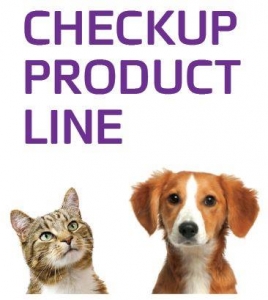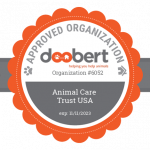 All My Children Wear Fur Coats had the pleasure of meeting Alon Rosenberg, the founder of Coastline Global, a company with a unique approach to an age old problem – how to collect urine samples from cats and dogs for diagnostic purposes. I recently had my dog, Darla, at the vet and they needed a urine sample. Recently, I was chasing her around the yard with a cup in my hand trying to get close enough to her while she is “doing her business” to collect the necessary sample. This can be an exercise in frustration.
All My Children Wear Fur Coats had the pleasure of meeting Alon Rosenberg, the founder of Coastline Global, a company with a unique approach to an age old problem – how to collect urine samples from cats and dogs for diagnostic purposes. I recently had my dog, Darla, at the vet and they needed a urine sample. Recently, I was chasing her around the yard with a cup in my hand trying to get close enough to her while she is “doing her business” to collect the necessary sample. This can be an exercise in frustration.
If only I had known Alon at that time. He would have told me about his product CheckUp, an at home urine wellness test for pets. He has developed a product for cats that uses hydrophobic sand (sand that repels water) for the collection of urine. The product is called Kit4Cat Litter. There’s nothing else like it. You use it for the purpose of collecting a urine sample from your cat. Then with the CheckUp strips, you are able to do an at-home test for four important elements – glucose, protein, Ph and blood in the urine.
There is a corresponding product for dogs that uses the innovative P-Pole – a telescoping pole with a cup receptacle at the end that allows dogs owners to easily capture a urine sample. No more chasing your dog around the yard, hoping for the perfect opportunity.
The CheckUp products for both dogs and cats are invaluable to pet owners. If your pet is healthy, you might use them once a year just to make sure that all of the indicators are normal. If you have an older pet or an obese pet, a twice a year check could provide valuable information in the event your pet’s condition is changing. If you have a diabetic pet, then you know how important it is to get periodic readings to make sure your pet is doing well on its medications.
Traditionally, vets had to use invasive procedures, costing upwards of $100 dollars, to obtain a urine sample. These procedures generally fall into two categories – 1. Cystocentesis and 2. Catheterization.
Cystocentesis utilizes a needle and syringe to collect urine directly from the bladder. The needle is interested into the abdominal wall into a full bladder. One advantage is the urine is not contaminated by debris from the lower urinary tract. The disadvantages are that the method is more invasive than others and is only useful if the pet’s bladder is full. It can also be difficult to do for pets that are uncooperative.
Catheterization involves inserting a sterile catheter into the urethra of the pet. A syringe can then be attached to the catheter to withdraw urine from the bladder. This method is less invasive than cystocentesis and may be a good option when it is difficult to obtain a sample via an alternative method.
That’s the beauty of the CheckUp line of products – they have eliminated the need for these invasive procedures and provide a cost-effective solution to an age-old problem.
You can also protect your pets with a Pet Trust from Animal Care Trust USA, Inc. Visit our website for more information.
Here’s a link to a video for the cat CheckUp line. Here’s a link to a video for the dog CheckUp line.


